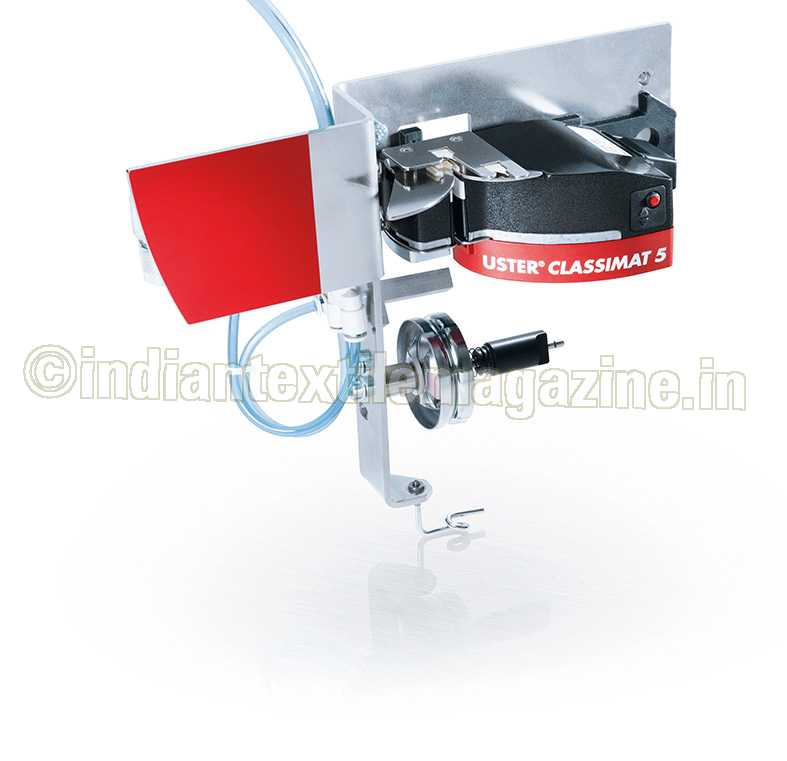Total customer satisfaction is every spinner’s goal, and reputations depend on it. Every critical yarn parameter must be tested to ensure that the resultant fabric meets expectations, whatever level of the market is being supplied. All the evidence available confirms this.
There are two main types of yarn users: those committed to weaving or knitting high-quality fabrics, and those serving ‘commodity’ applications. Both groups have their own specific requirements, and it’s essential that spinners understand these needs and how to meet them. What is clear, though, is that yarn testing is fundamental to customer satisfaction, in every case.
Major customers, demanding requirements
The Pallavaa Group of India, with its spinning operations, specialises in viscose, MicroModal, Modal, polyester, Bamboo, Supima and its blends, as well as pure cotton. Established in 1995, the group has built a market-leading position today, supplying big-name brands. “We are proud to be a supplier of NEXT, Marks & Spencer, H&M, Victoria’s Secret and others,” says Durai Palanisamy, Executive Director of the Pallavaa Group.
Of course, Pallavaa is not alone in working with major retailers, and the group is quick to acknowledge that its ambitions in this direction depend on efficient quality control which meets the requirements of demanding yarn buyers.
In fact, long-standing customer relationships, based on high standards, call for a whole range of yarn quality parameters to be controlled: evenness, imperfections (neps, thin and thick places), hairiness, remaining defects and foreign fibers. Measurements from the USTER TESTER 5 provide reports and analysis on evenness, imperfections and hairiness, while remaining defects and foreign fibers are covered by the USTER CLASSIMAT 5. Quality-conscious spinners have trusted in these two instruments for decades for reliable and accurate data. These laboratory testing instruments data can tell the yarn quality story, and even predict how the final fabric will look.
Every quality parameter matters
It’s also true that some spinners, mainly serving the lower end of the market, might believe that evenness (CVm) testing could be sufficient for their needs. But that view is mistaken, says Gabriela Peters, Product Manager for Yarn Testing within Uster Technologies: “CVm is indeed a relevant yarn quality parameter, but to predict the final fabric of a yarn it is essential to test other parameters too.”
Comprehensive testing at the Uster Technologies laboratory in Switzerland has shown that yarns with comparable CVm values can produce fabrics with obvious differences in appearance. In the tests, Ne24 cotton yarns from 10 different suppliers had insignificant differences in their CVm values, which could lead to the wrong conclusion that the fabrics would look the same. Further test data from the USTER TESTER 5 showed results for neps which were close in eight of the 10 cases, in which the yarns had a nep value below the 25 USTER STATISTICS Percentile (USP). But one of the yarns had a much higher nep value, even exceeding 50 per cent of the USTER STATISTICS value.
“We know from experience that fabric knitted from yarn with a nep level over 50 per cent will show little pilling on the surface,” says Peters. The yarns were also tested for hairiness, and here the test results varied even more widely. Values ranged from below 25 per cent USP to above 95 per cent.
“Fabric made from yarns with such different hairiness values will never ever look the same, and as these test results demonstrate, spinners testing only yarn evenness are making a potentially serious error. They would clearly be wrong to place any confidence in producing yarns to meet customer needs under these circumstances.”
Common or best practice?
Some yarn users have developed a policy of taking sample packages from a yarn lot and ‘testing’ them by running the yarn through their weaving or knitting machines. “The effort of knitting or weaving a fabric can be reduced to the minimum or eliminated if you have a yarn test report containing reliable information relating to fabric appearance,” says Peters. “The USTER TESTER 5, the heart of textile quality control, provides testing data which can predict exactly how a fabric will look and feel. The USTER CLASSIMAT 5 identifies the number of disturbing thick and thin places, helping to assess fabric defects.”
Together the parameters measured by USTER TESTER 5 and the USTER CLASSIMAT 5 can help to assess fabric appearance issues and downstream performance. Both instruments correlate all quality parameters to the USTER STATISTICS value, for easy comparison.
Understanding yarn quality control is crucial if spinners want to develop and maintain a customer base to be proud of. That will only be possible when consistent quality is guaranteed by hard facts and reliable data, not left to chance or based on half-hearted testing. Spinners without an efficient quality control concept risk losing a lot more than just the odd customer – they are putting the good name of their entire business on the line, as Durai of the Pallavaa Group underlines: “We are obliged to the customers, as also to our own reputation, to make sure that the fabric made from our yarns leads to satisfaction. A comprehensive quality control is the least we can do.”

